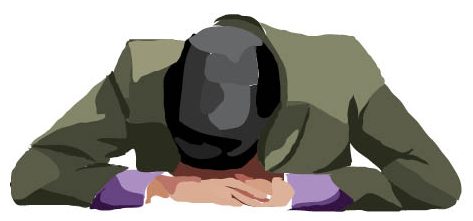Wait, Teachers are Stressed?
Student stress compares to teacher stress

It’s a well-known fact that students are stressed. Specifically at Blue Valley, where as of last spring semester, 78 percent of the student body received a weighted 3.0 GPA or higher, which is what it takes to be on the honor roll. In respect to that statistic, over half the school was on the honor roll. With that level of academic achievement there are bound to be some pretty stressed out students. Most classes that typical Honor Roll students take at BV are designed to be difficult and require more studying. That’s because the teachers at BV work just as hard as the students — if not harder — to create lessons, make tests, and grade all of these assignments. Similar to students, teachers are bound to be stressed as well. But, teachers work as hard as they do so that their students will be well-prepared to attain the same level of achievement in a university setting.
Spanish teacher Jill Gouger is one of many teachers at BV who works incredibly hard, in and out of school, to grade papers, read essays and create tests and homework that will challenge students, while keeping to a timely curriculum schedule. Gouger said she typically spends five to six hours on ‘homework’ every night. That number doesn’t include the time and effort that goes into the five different BV clubs Gouger sponsors — National Spanish Honor Society, Gay-Straight Alliance, Gender-Equality Club, Dungeons and Dragons Club and Young Progressives Club. “Anyone who knows me knows that I’m still here working until 8 p.m.,” she said. Gouger’s workload is equivalent with, if not greater than, the workload of a typical, high-achieving student at BV. So wouldn’t it make sense that her stress is derived from the sheer amount of time and effort it takes to accomplish all these tasks, on time and done well? “[The stress mostly originates] not so much from the school work I have to do, but more from worrying about my parents health and how they’re doing,” Gouger said. Teacher stress and student stress are also similar in those respects in that students, as well as teachers, stress about school, work and personal affairs. According to a poll conducted by the Tiger Print, 92 percent of students said that they stress about their school work while 58 percent said they stress about their personal lives.
Junior Kaitlyn Dehais is an example of what a typical Honor Roll student at BV looks like. She’s involved in over six clubs and extracurricular activities, takes majority AP and Honors courses and said she is stressed enough to forget to eat her lunch on some days. “I take almost all high-level classes because I need to get into college,” Dehais said. “Getting good grades in those classes is the best way to ensure I’ll be accepted somewhere.” But where students and teachers differ in the source of their stress, the physical tolls that their stress takes is all the same. According to the same poll, 76 percent of students said that fatigue is the biggest physical toll that their stress takes on them. Gouger said stress makes her feel tired, caused by working for six hours after an already exhausting seven-hour school day. Dehais agreed in the ways that stress affects her physically. “I’m fatigued all the time,” she said. So, the next time you’re studying, and you’re thinking your teacher doesn’t have an ounce of stress weighing on their shoulders, just remember — they go to the same school as you. But they’re the ones who design and grade all the tests, projects, assignments and homework that you do.

Victoria Wilson is a senior staff writer for “The Tiger Print.” In her free time she works part-time at Chipotle and enjoys to read non-fiction psychology...



